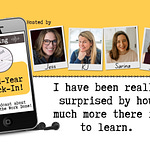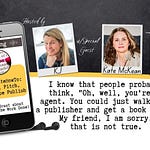Pace, y’all. It’s the magic secret sauce in everything. And yet it’s also a squishy sounding word that’s almost undefinable. What is it? Can you point to it? Can you highlight it in yellow so I can see it? Can you tattoo it on my arm?
I would if I could. But sadly, pace is invisible. In fact, write it out in so many words: I just knew that if I didn’t get that promotion, I’d feel like a failure forever—and you’ve killed it. It’s an airy sprite, damnit, totally un-pin-downable.
Pace is the wind at your back as a reader. It’s the ghostly tug forward. It’s the thing that makes you turn the page. And it exists in the most unlikely places, especially when it comes to non-fiction. This Is Not a Book About Benedict Cumberbatch truly is, if you’re the right reader, a page-turner—because at every stopping point, it essentially says to you, ah, now you think you understand me. And therefore you think you understand yourself. But wait there’s more.
It’s the ginzu knife commercial of non-fiction, in a good way. Structurally, it unpacks the problem facing the writer on a deeper level in every chapter, and suddenly there you are with a book you can’t put down.
My latest fiction can’t-stop-won’t-stop was Carrie Soto Is Back, Taylor Jenkins Reid’s latest. That book had a wildly intense narrative thrust that was so brilliant (I actually forgot to talk about this in the recording)—the whole question, the whole time, is always will she win this match/this tournament/this Slam—and as a reader you care about that—but ONLY because you care about where she is emotionally. It’s a tour de force, TJR at her peak, a masterpiece of intertwining plot action with emotion.
Yeah, I can’t do that yet, and maybe neither can you. But we can look for it, and try to figure out what makes it work and learn from it. So that’s your bonus assignment this week, as I say in the audio: look at the books on your bed table that are just kind of lingering there, versus the ones you finished days (or hours) after you started them and ask yourself—why? What make this work for me, and what’s there that I can use in my own work?
PS: If you’ve done all the exercises up to now, NICE JOB getting this far, kids. I can’t tell you how much this is really going to help as you write or revise. Color me envious, because it’s always hard for me to do this work. But I, too, am learning!
How to listen: if you’ve listened to any previous Bonus episodes or Minisodes, this one should already BE in your podcast feed. If not, click on the link to listen and you’ll find yourself at amwriting.substack.com. You COULD listen there, but we’re guessing you’d rather get all subscriber episodes, from now on, in your usual podcast-listening app. It’s easy, and you only have to do it once to get every #Minisode from now on right where you want it.
So click “listen in podcast app.” You’ll get an email with a link in it. Click the link—ON YOUR PHONE—and you will get a menu of the most popular podcast apps. Chose yours and click, and you’ll have a new “private” podcast feed for supporters only.
If your favorite listening app isn’t included, fear not. There’s an RSS link in the email. Your podcast app has a way to add that—it’s probably a “+” sign somewhere on your main page. Add the link once, and any time we do a #SupporterMini, you’ll get it without having to do a thing. (Trust us, it’s easy. This is WHY we chose Substack.)











